I love this!!
The product arrived quickly, was well-packaged, and came with clear instructions. It's been working perfectly so far, and I highly recommend it.
Free Delivery on Orders Above Rs 500/- Pan-India
Safely Delivering Genuine Products PAN INDIA
Cash on Delivery Available for Orders above Rs.500/- and Upto Rs 3000/-
GST Invoices for Your Business
Dedicated Technical Support Team
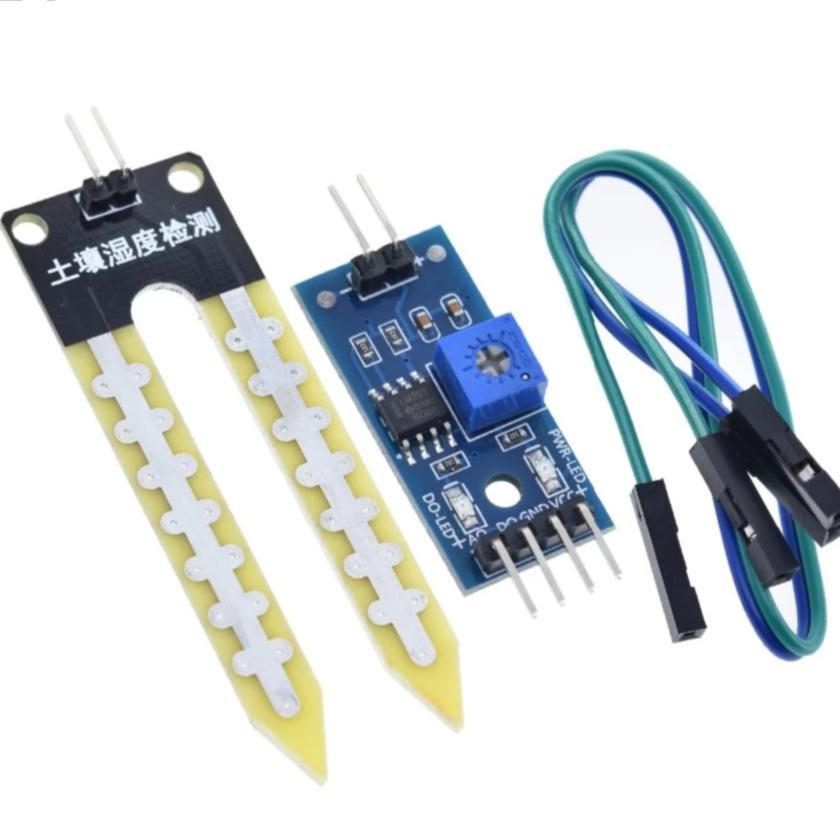
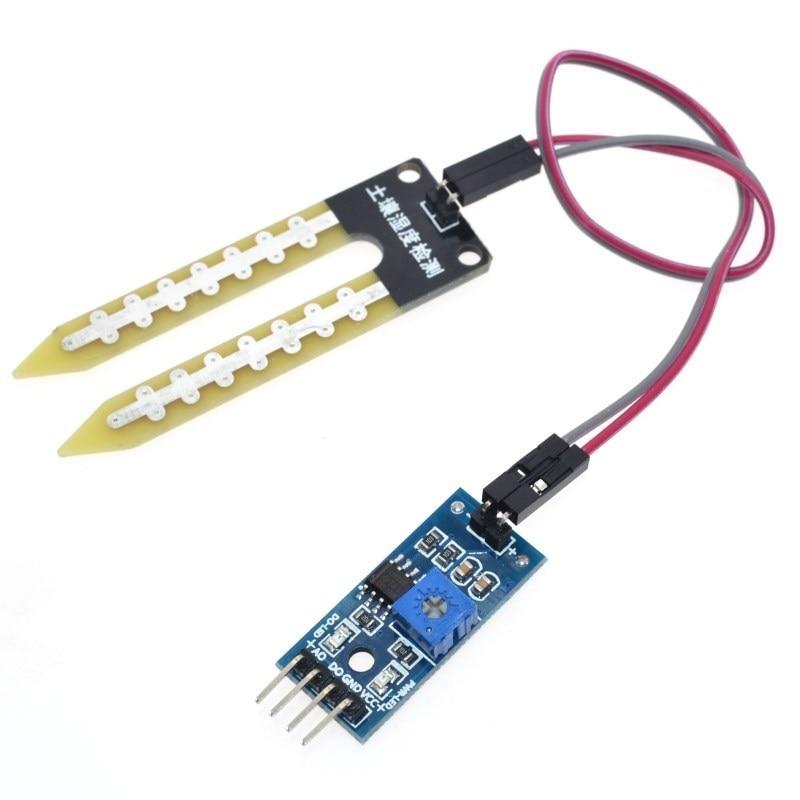
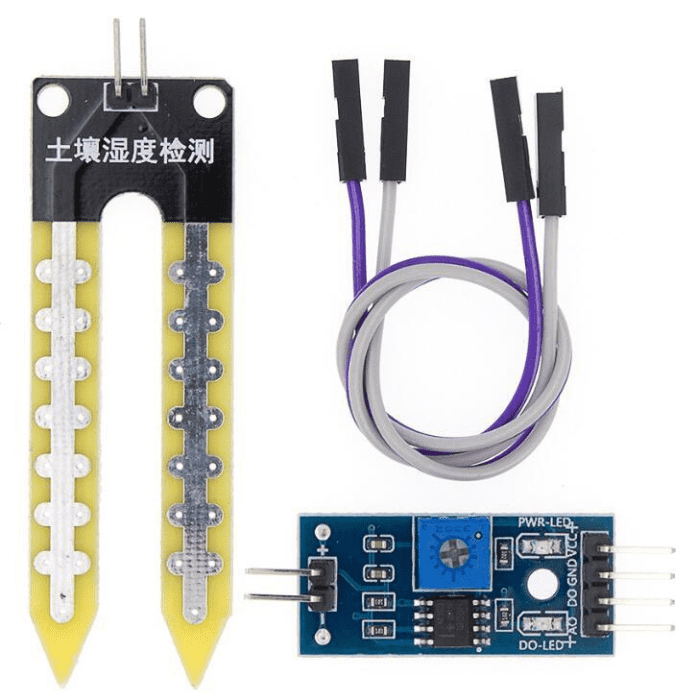
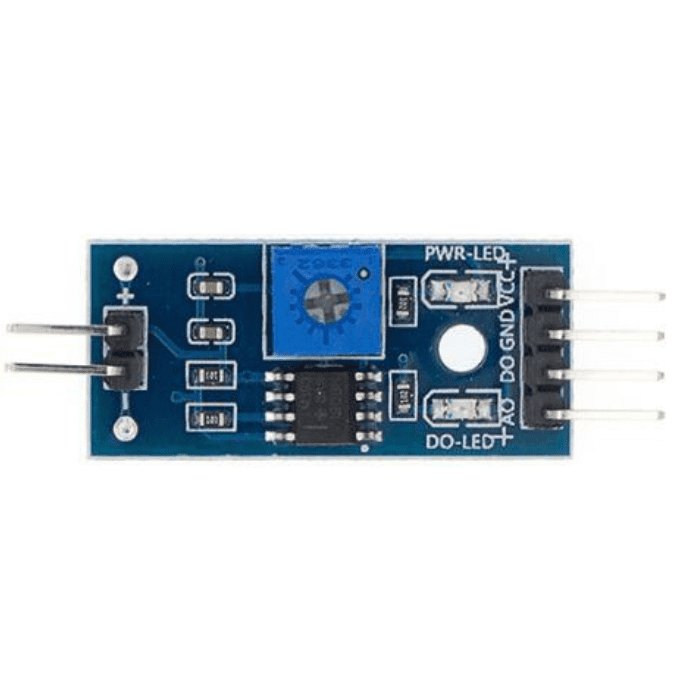
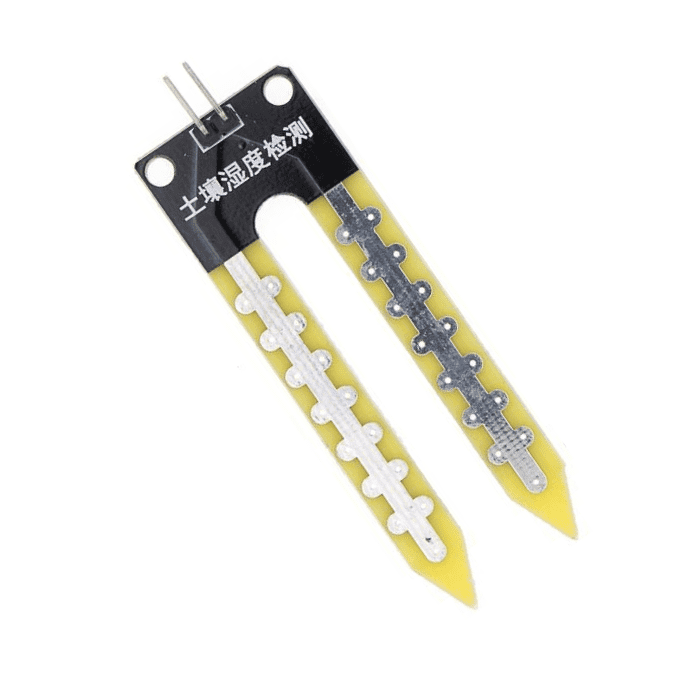
Robocraze
Out of stock
Couldn't load pickup availability
This is Soil Moisture Sensor Module or Soil Moisture Meter, Soil Humidity Sensor, Water Sensor, Soil Hygrometer for Ardunio. With this module, you can tell when your plants need watering by how moist the soil is in your pot, garden, or yard. The two probes on the sensor act as variable resistors. Use it in a home automated watering system, hook it up to IoT, or just use it to find out when your plant needs a little love. Installing this sensor and its PCB will have you on your way to growing a green thumb!
The soil moisture sensor consists of two probes which are used to measure the volumetric content of water. The two probes allow the current to pass through the soil and then it gets the resistance value to measure the moisture value.
When there is more water, the soil will conduct more electricity which means that there will be less resistance. Therefore, the moisture level will be higher. Dry soil conducts electricity poorly, so when there will be less water, then the soil will conduct less electricity which means that there will be more resistance. Therefore, the moisture level will be lower.
check out : Soil Moisture Sensor Module (Pack of 25)

Soil Moisture Sensor Interfacing With Arduino Uno
Also check the Automatic Plant Watering System Kit available on the Robocraze website. It is a DIY kit designed for a connected garden, helping users monitor and automatically water their indoor plants or control soil moisture in the garden. The kit includes components such as a relay module, mini water pump, plastic battery storage case holder, jumper wires, vinyl tubing, and a soil moisture detector module.
read our blog explaining the 5 Arduino Project Ideas – Expert Level, explores advanced Arduino projects, offering ideas ranging from a smart irrigation system and real-time weather monitoring to a robotic arm


| Sensor Type | Soil Moisture Sensor |
| Operating Voltage (VDC | 3.3 ~ 5 |
| PCB Dimension | 3cm x 1.5cm |
| Soil Probe Dimension | 6cm x 3cm |
| Cable Length (CM) | 20 |
| Weight | 50 grams |
For more details, please check our Shipping and Return Policy
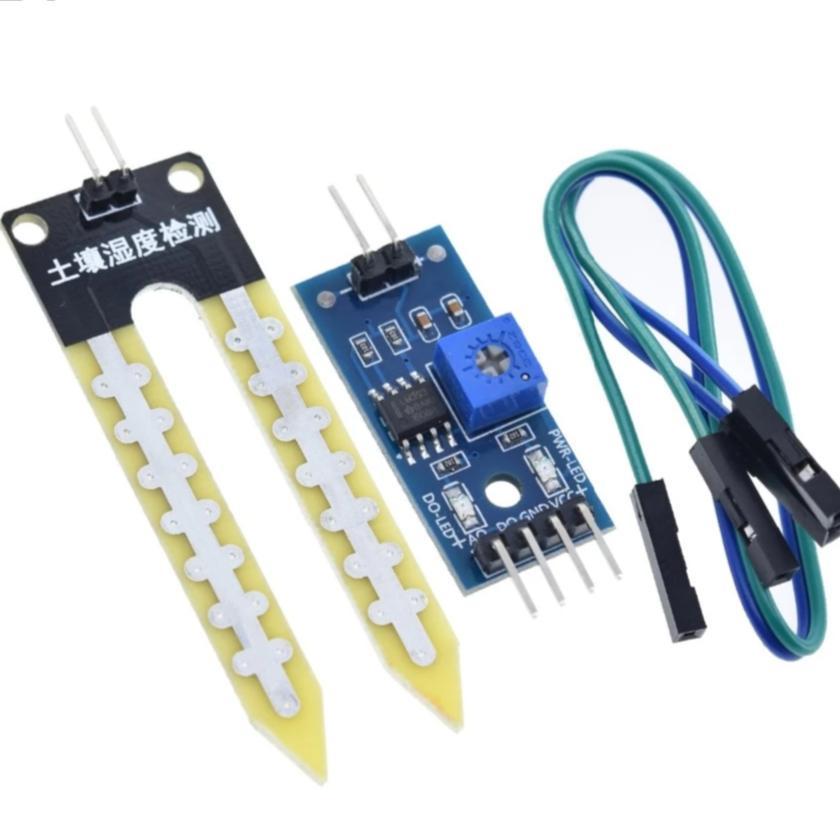
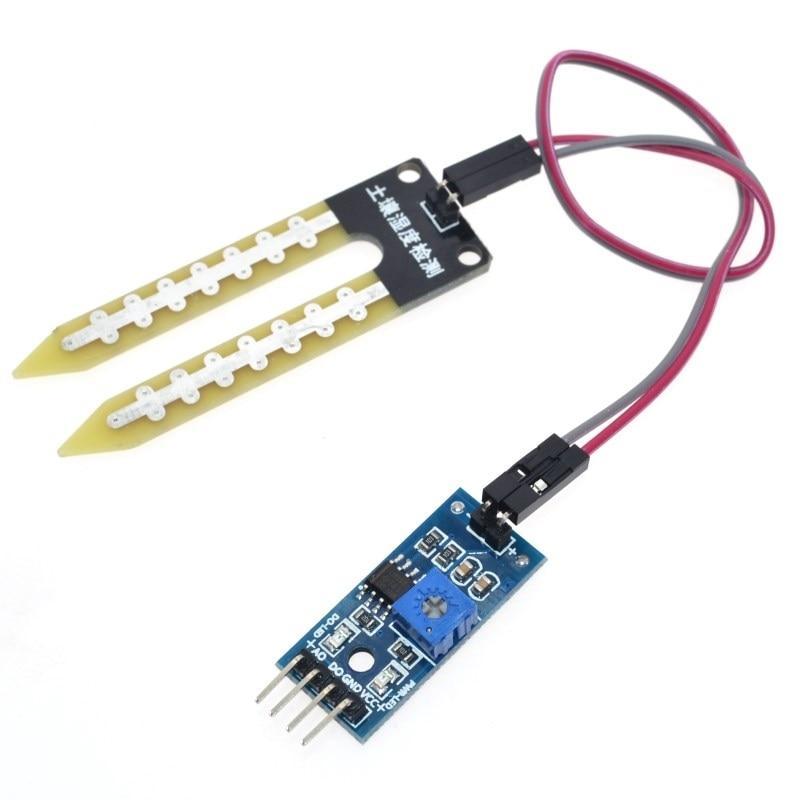
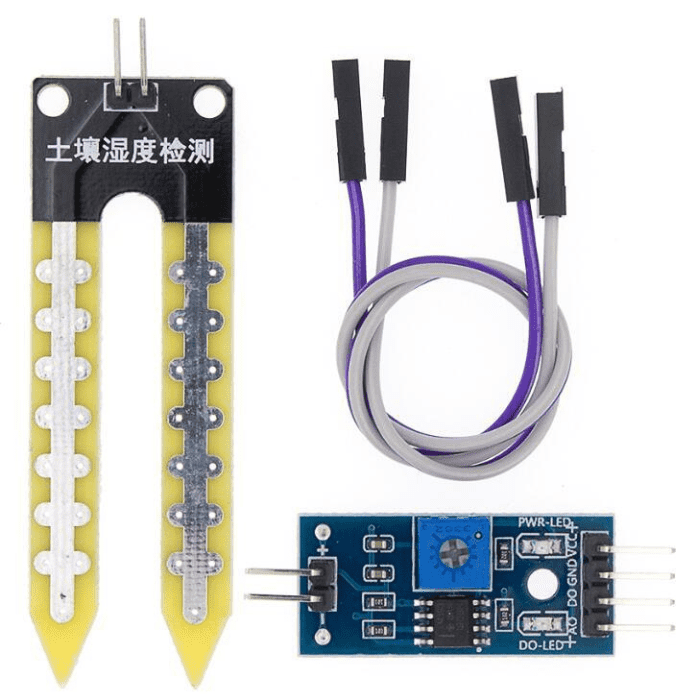
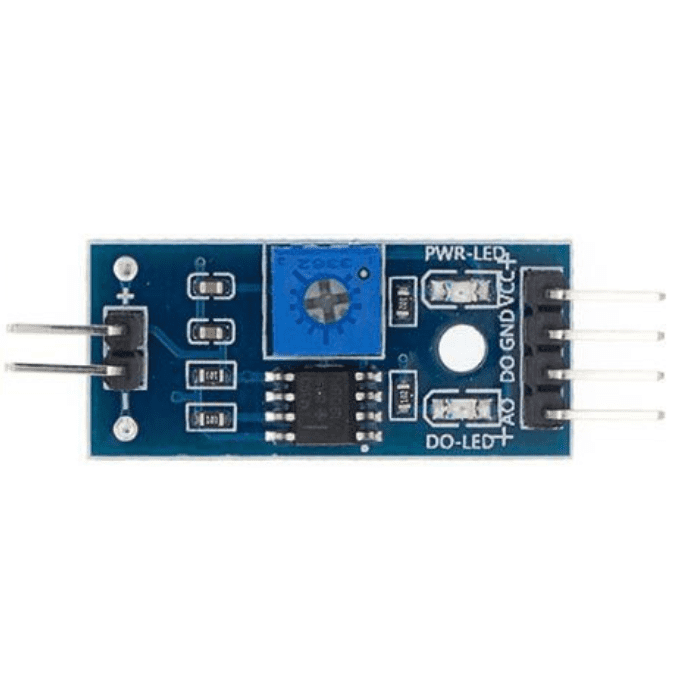
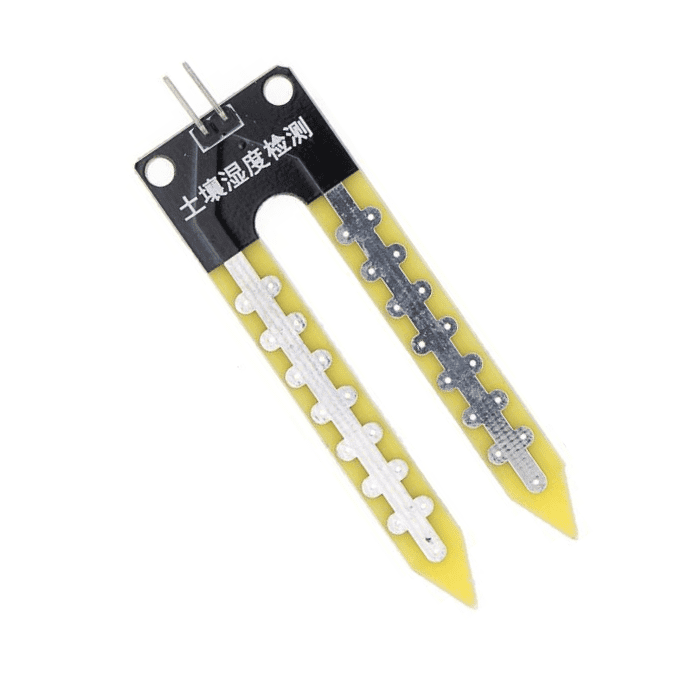
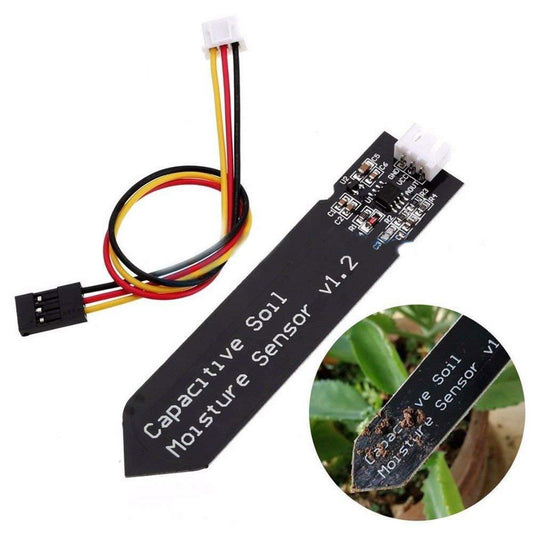
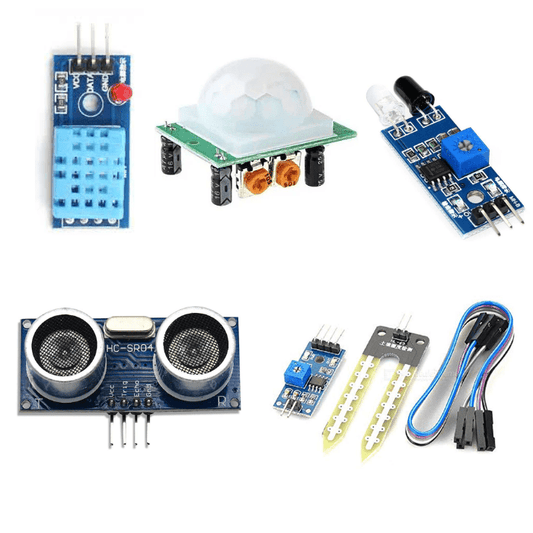
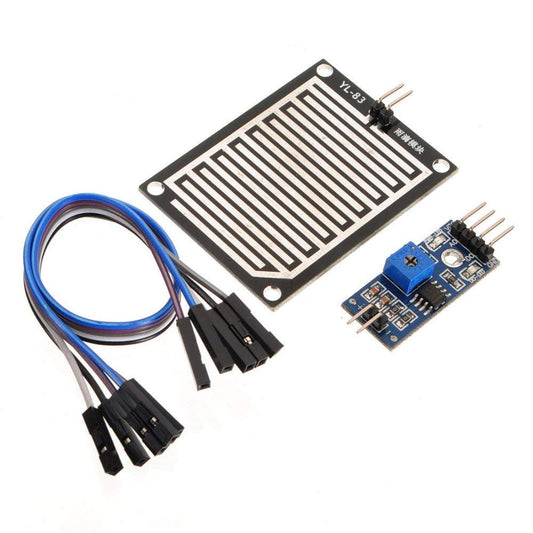
Soil Moisture sensor mainly uses capacitance to determine the soil's water content. This sensor works by inserting the module into the soil. The fork-shaped probe with two exposed conductors functions as a variable resistor, with resistance varying with soil moisture content.
It is very simple to use a Moisture sensor module with a Arduino. Connect the sensor module's Analog/Digital Output pin to the Microcontroller's Analog/Digital pin. Connect the VCC and GND pins to the Microcontroller's 5V and GND pins. Then, insert the probe into the soil.
A built-in potentiometer allows you to calibrate the digital output of the module (DO). You can set a threshold by turning the potentiometer's knob. The Status LED will light up and the module will output LOW when the moisture level exceeds the threshold value. When your plant is ready to be watered, insert the probe into the soil and turn the pot clockwise until the Status LED turns on, then counter-clockwise until the LED turns off to calibrate the sensor. That’s it your sensor is now calibrated and ready for use.
Soil moisture sensors aid in good irrigation management, which results in better crops, lower input costs, and increased profitability. Irrigators can use soil moisture sensors to figure out what's going on in a crop's root zone.
Soil moisture is a crucial factor in agriculture, landscaping, and gardening. The proper amount of soil moisture ensures the optimal growth and health of plants. Traditionally, farmers have relied on manual methods to measure soil moisture levels which can be time-consuming and inaccurate. This is where the benefits of using a soil moisture sensor become apparent for modern-day farmers. These sensors provide accurate real-time data on the water content in soils giving farmers precise information about irrigation needs, allowing them to make informed decisions that ultimately increase crop yield while conserving water usage. Additionally, these sensors save both time and resources by eliminating guesswork and reducing labor costs associated with traditional methods.

The product arrived quickly, was well-packaged, and came with clear instructions. It's been working perfectly so far, and I highly recommend it.

The product is fully functional, and the packaging is good. Everything was fine with the items, no issues at all.

This product is very good and accurate. I used it for an automatic soil sensor water dispenser, and it's working perfectly. I'm satisfied with it.

When I got the sensor module, I was happy to see that it was even better than I expected in terms of how well it worked and its quality.

Its accurate moisture detection is invaluable for maintaining optimal plant hydration. Setting it up was hassle-free, and the build quality instills confidence.

Good

Like very much used for my son's project thanks to deliver time

Working as expected

Very happy with delivery and product

good product working perfectly.

Good one... And as expected.. And as needed

Like very much used for my son's project thanks to deliver time

Working as expected

It has a fixed bolt becz of that it's easy to install. nice product must buy
© 2023, TIF Labs Pvt. Ltd.
